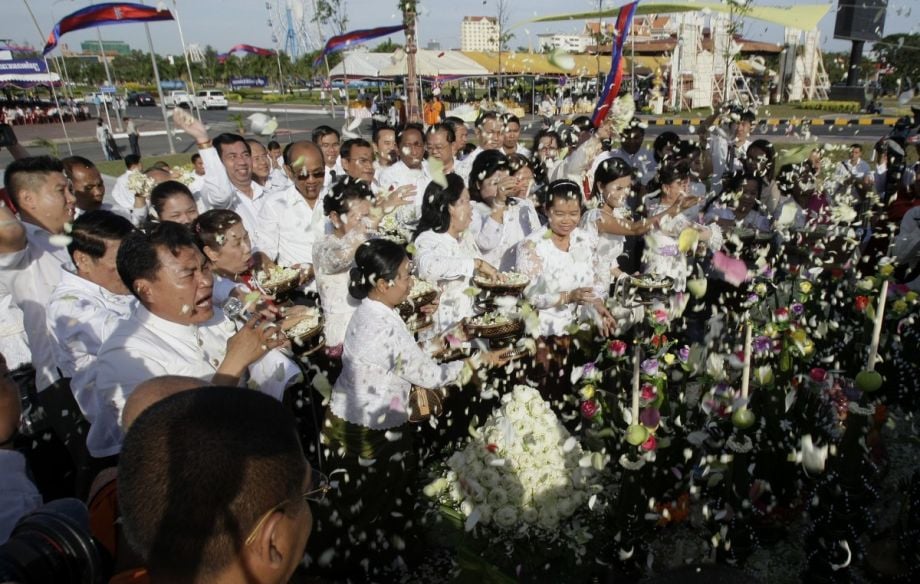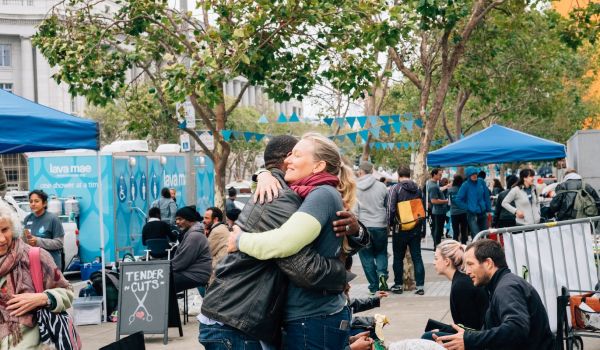In Phnom Penh, the view from the western bank of the Tonle Bassac River to the mega-construction on Diamond Island is, like many views of a place where disaster once struck, strangely tranquil. The twin bridges that connect to Diamond Island – a concrete landscape of multi-use development projects, better known by its Khmer name, Koh Pich – were installed two years ago after the city tore down the one that, in 2010, was the site of a panicked stampede that killed more than 350 people.
Prime Minister Hun Sen called the 2010 stampede the worst disaster to befall Cambodia since the Khmer Rouge regime of the late 1970s, when nearly two million people were killed. It happened on the final night of the Water Festival, the traditional celebration marking the annual reversal of the Tonle Sap river (when the rainy season ends, the waters, no longer backed up, resume their north-to-south flow). Cambodians mark the event all over the country, but nowhere is it as flashy and showy as it is in Phnom Penh, with colorful longboat races in front of the Royal Palace, and the attendance of the royal family.
Not to mention a lot of people.
Every year since the 2010 tragedy, the festival has been canceled. In 2011, flooding was cited. In 2012, it was the death of a former king. And last year, flooding again. To some, except for the passing of the king, the cancellations were akin to convenient excuses to let the painful memory of 2010 fade as far into obscurity as possible.
This year, however, is a return to form.
With no explanation why – flooding is not exactly benign this year, having already killed dozens of people – the government announced last month that the festivities will go on in Phnom Penh. On November 5, 6, and 7, boat races will once again grace the waters in front of the palace, and Cambodians from the provinces will travel to the city en masse. Up to one million people usually turn out for the events. The city itself has a population of a little more than two million.
What safeguards have been put in place to prevent what happened in 2010 from happening again? It’s difficult to say. The past, or the past Water Festival, is a taboo subject.
“Don’t recount this story,” Chhin Ketana, secretary-general of the National and International Ceremonies Organizing Committee, told the Cambodia Daily newspaper when the news broke last month.
“I can’t answer why the festival is allowed to happen this year, because I am not aware either,” said Pean Cham Roeun, an official with the same organization, speaking to the Phnom Penh Post.
Royal Palace Minister and chief of the planning committee Kong Sam Ol said at a meeting related to the festival on Wednesday in Phnom Penh that approximately one million people will attend. To prevent clumps of people, vendors are banned along the main stretch of riverside where the races will occur. He also instructed officials to provide ample services, for normal and extraordinary situations.
“You must write labels as signs to tell visitors where the toilets, first aid and police stations are, or they will not know where to go when they have a problem. And please help to strengthen the security.”
Since the stampede in 2010 happened at night on the last day, the festival will end at noon this year.
The government will not want a repeat of 2010, or a repeat of its aftermath, when it fended off criticism for launching a speedy investigation that held no one responsible. No tragedy ages well, but the Koh Pich stampede hasn’t aged at all.
Officials involved in the process will have their hands full this year, both figuratively – the pressure for a seamless festival is immense – and literally, with higher than usual attendance levels.
“I am preparing some plans but they are not completed yet. We predict that there will be more people attending it because the Water Festival was not held for a few years,” said Chev Hak, Phnom Penh municipal traffic police chief.
At the site itself, the only reminder of the tragedy is a memorial stupa engraved with the names of the victims. Except for anniversaries, the stupa, which reaches skyward from a raised platform, receives few visitors. But it doesn’t take long to find someone who can remember what happened that night.
Vicheat Van, a 34-year-old tuk tuk driver and part-time fisherman, said he was standing about 100 feet away.
“I wanted to come here but I saw there were too many people, so I stayed back,” he said. His neighbor, a woman, died in the chaos. He walked over to the stone engraving, running his finger over the names to look for hers. He couldn’t find it, and claimed that not all the names of the victims had been included.
Van subscribes to the widespread belief, which some might call a conspiracy theory, that the people on the bridge that night were electrocuted. The bridge was strewn with lights, and a fire truck was spraying water onto it to cool off the crowd. Besides, the thousands of dollars that the government paid out to families was atypically high, and smelled of hush money.
Still, he’s going to attend in November, but he’ll avoid the crowds.
“If I see a lot of people, I will not go there,” he said. He doesn’t think the city is prepared for the influx. “They don’t have plans for people who are from the village.”
But Say Kimhong, a 53-year-old selling drinks at a stand nearby, said the city does have a plan, even if he doesn’t know much about it. His mobile stand is parked on the street in front of the stupa. Selling drinks is only a side business. Kimhong is also the chief of a local security guard unit employed by the city. On the night of the tragedy in 2010, he was manning a checkpoint, and says he heard people at the bridge yelling out, “Bridge is broken! Bridge is broken!” His own personal theory is that kids were messing around, and unintentionally scared everyone else, like yelling fire in a movie theater.
“People got scared and they tried to escape, but they had nowhere to go,” he said.
Afterwards, he was ordered to guard the corpses. He saw “many” dead people. For days, the bridge was still littered with shoes and clothes of the victims, until finally, authorities came to pick them up.
He will work the festival again this year, just like last time. Meanwhile, the prime location of his business – it’s at the end of a main thoroughfare, next to a park and a large casino – means he can’t move to a spot with more benign memories.
“When I am away from here, I do not remember. But when I arrive here, it reminds me about the fatal accident and I have a pity on the victims. We do not want it to happen again,” he said.





_1200_700_s_c1_600_350_80_s_c1.jpg)








